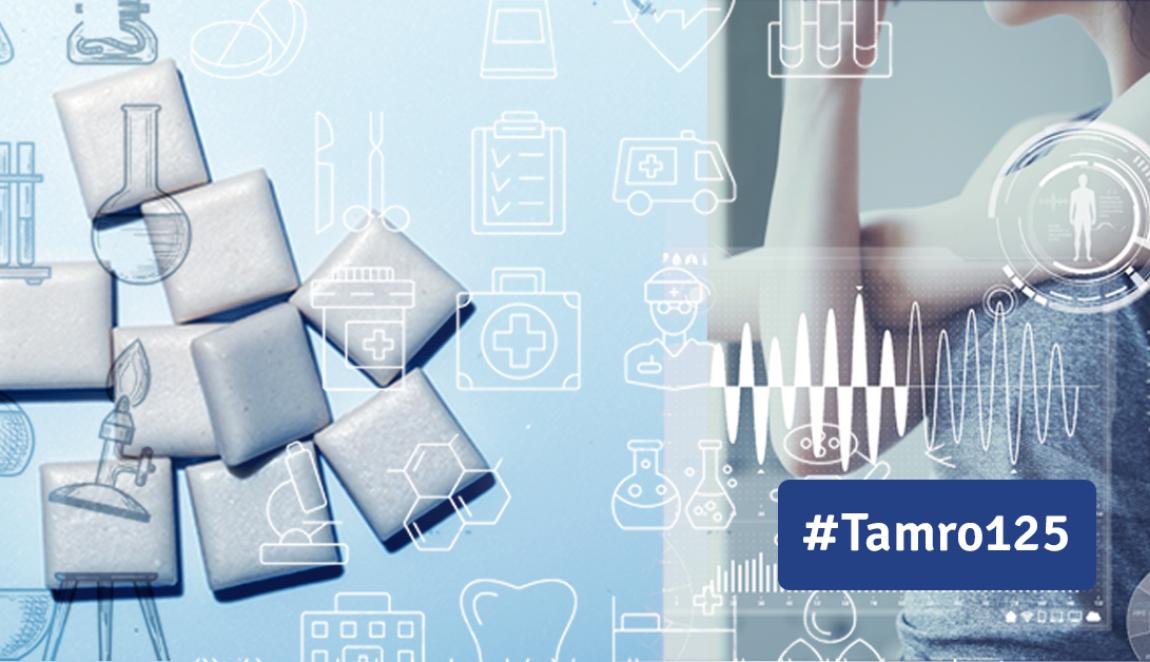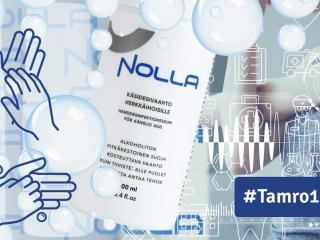
Nicotine replacement products that support smoking cessation are the only self-medication products in Finland that can also be sold outside pharmacies. Product sales expanded to stores, kiosks and gas stations in 2006. This article is part of a series showcasing products and activities along Tamro’s 125-year journey.
Nicotine products used to be only available in pharmacies, but an amendment to the Pharmaceuticals Act in 2006 allowed products to be sold under license to adults in tobacco shops, gas stations and kiosks. The Pharmaceuticals Act regulates the functions related to the marketing authorizations of products, such as the point of sale and sales control. There are also well-defined regulations for the marketing, return and disposal of products.
According to the Finnish Medicines Statistics Survey, the wholesale sales of nicotine products in 2019 amounted to more than EUR 61 million and they are the best-selling self-medication in Finland.
- Since the change in the law, we have also distributed nicotine products to grocery stores, kiosks and gas stations, says Ulla Sääski, Tamro's key customer manager.
Tamro's distribution includes three nicotine brands: Nicorette, Nicotinell and Zonnic. Products under these brands include, but are not limited to, nicotine chewing gum, patch, oral spray and lozenges.
- Nicotine products, like alcohol and tobacco products, have their own marketing authorisation. The permits are distributed by the Pharmaceutical Safety and Development Center FIMEA, and the municipal health authorities are responsible for supervising the permits and sales, Sääski continues.
Ulla Sääski, Tamro's key customer manager, and Klaus Jarva, CFO of GSK, which owns the rights to Nicotinell products in Finland, explain the role of Tamro in the distribution of nicotine replacement products.
History: The invention of the Swedish doctor spread to the world
The American nicotine chewing gum Nicorette dates back to the 1970s and is the first nicotine product to be launched worldwide.
The Swedish Dr. Ove Fernö’s innovation began when he noticed submarine and flight crew chewing tobacco chips when they could not smoke tobacco.
The purpose of the invention was not only to add nicotine to the chewing gum, but to allow it to be released during chewing and thus to alleviate the withdrawal symptoms of the user.
In 1991, Nicorette launched a nicotine scanner on the market, and in 1996 its products changed in the United States to self-medication medicines, which made the spread of nicotine products available to an increasing number of people.
The nicotine products market grew over the years and decades, and products from other labels also entered the market. Nicotinelli's nicotine patch, for example, landed in Finland in the 1990s.
In Finland, nicotine replacement products have been available without a prescription since the 1990s, but for a long time the products remained only in the selections of pharmacies and within the scope of the advice given in them.
Now, in addition to pharmacies, reliable information on the appropriate use of self-medication is available from the Current Care Recommendationfor self-medication. The recommendations are based on an evaluation of scientific research. The information texts on the packaging of nicotine products have also been approved by the Pharmaceutical Authority.
Distribution change: Requires strong expertise
As a result of the 2006 legislative amendment, the volume of product distribution increased exponentially as products appeared on the shelves of shops, kiosks and gas stations in addition to pharmacies.
- The expansion of the distribution of nicotine replacement products to the grocery side was a big, historic step. In Finland, pharmaceutical wholesalers had not previously distributed medicines to the grocery trade. We worked together a lot with Tamro employees to get the logistics up and running, says Klaus Jarva, CFO of GSK.
A lot of planning work was done in advance at Tamro to make the storage and distribution of the products as smooth as possible. For example, separate collection areas were built for nicotine products.
- When a change in the law was in sight, we introduced a new logistics operating model in Tamro so that we could secure distribution throughout Finland, says Ulla Sääski.
The massive distribution of nicotine replacement products to grocery stores differs significantly from food distribution, for example. After all, it is a medicinal product.
- I can not overemphasize the importance of strong expertise, background work, and careful planning in enabling this type of distribution.
Tamro's role: ”Collecting differs from pharmacy collecting”
Tamro is responsible for the distribution of three major nicotine brands to grocery stores, kiosks and gas stations. The products continue their journey from Tamro's logistics center through the south of Finland to the northernmost regions.
Employees handle orders in stages 24/7.
- Our warehouse workers collect and package products manually from morning until night. Collecting is different from pharmacy collecting because instead of green boxes, we collect products in cardboard boxes. Next time, the boxes will only open in stores that are allowed to sell nicotine products, Ulla Sääski from Tamro says about logistics process.
- We make sure that the products are safely in the right place at the right time, Sääski continues.
According to Klaus Jarva from GSK, Tamro's logistics have worked well. He praises the decades lasting co-operation.
- Tamro has handled the distribution of our products smoothly. Although we are Tamro's customers, we also consider them to be our strong partners.
The number of nicotine products circulating through Tamro has multiplied since a legislative amendment made it possible to sell them in grocery stores.
- The use of nicotine replacement therapy products has increased every year. At the same time, smoking has decreased. In addition to the change in the sales location, the development is influenced by taxation and its changes. There is fragmented national data on the adverse health effects of various nicotine products and their incidence. In practice, we are not aware of the public health effects of the change in distribution that took place in 2006, says Heidi Tahvanainen, Tamro's Public Relations Manager.
Also used as a source: kaypahoito.fi, kela.fi, Nicorette.com, Suomen lääketilasto, THL



